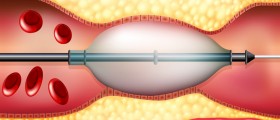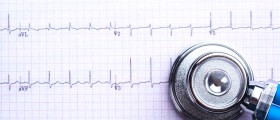
Coronary angiography is a specialized X-ray test which gives perfect insight in the structure and functioning of the coronary arteries. Coronary angiography belongs to a group of procedures known as cardiac catheterization. In cardiac catheterization a long, thin, flexible tube is inserted into the patient's body with one purpose, to reach the coronary arteries. Catheterization of the coronary arteries may be performed in diagnostic and therapeutic purposes. During coronary angiography specific type of dye which can be properly visualized by X-ray machine is injected into the coronary blood vessels. The dye makes vessels visible and any kind of damages can be easily noticed.
Coronary Angiography - the Very Procedure
Coronary angiography is performed in a catheterization room. Prior the procedure patients are administered local anesthetics. Anxious patients may be also administered a sedative. A specific catheter is inserted through a wide needle and small cut into a blood vessel of the groin or arm. The doctor gently pushes the catheter towards the heart vessels. X-ray machine gives perfect insight in what is going on and this way a doctor maintains proper monitoring of the progress of the catheter. Finally the catheter reaches the main coronary artery and the tip of it is pushed a bit inside. What follows is injection of the dye and taking several X-ray films while the dye is injected. These X-ray films are recorded in a form of moving pictures and they represent an angiogram. The test includes examination of all coronary arteries and their branches. Once the examination is finished the catheter is gently removed. The cut in the skin is sewed with a few stitches.
Risks and Complications of Coronary Angiography
In majority of patients it is normal to experience bruising of the skin where the catheter was inserted. The specific area may be sore for a few days. More serious problem occurs if the site of catheter insertion becomes infected. It is essential to report any kind of redness, swelling or tenderness of the site of catheter insertion. This complication is successfully treated with antibiotics. Some patients may complain about a short angina-like pain during angiography. The pain is transitory. Furthermore, the dye may cause hot, flushing feeling when injected. This sensation lasts approximately few seconds. In rather rare occasions patients may develop allergic reaction to the dye.
Serious complications are not so common and they predominantly affect people with already existing heart conditions. They include a heart attack during the procedure, damage to the coronary arteries, a stroke and in rather rare occasions lethal outcome which is usually a consequence of the previously mentioned complications.

















Your thoughts on this
Loading...